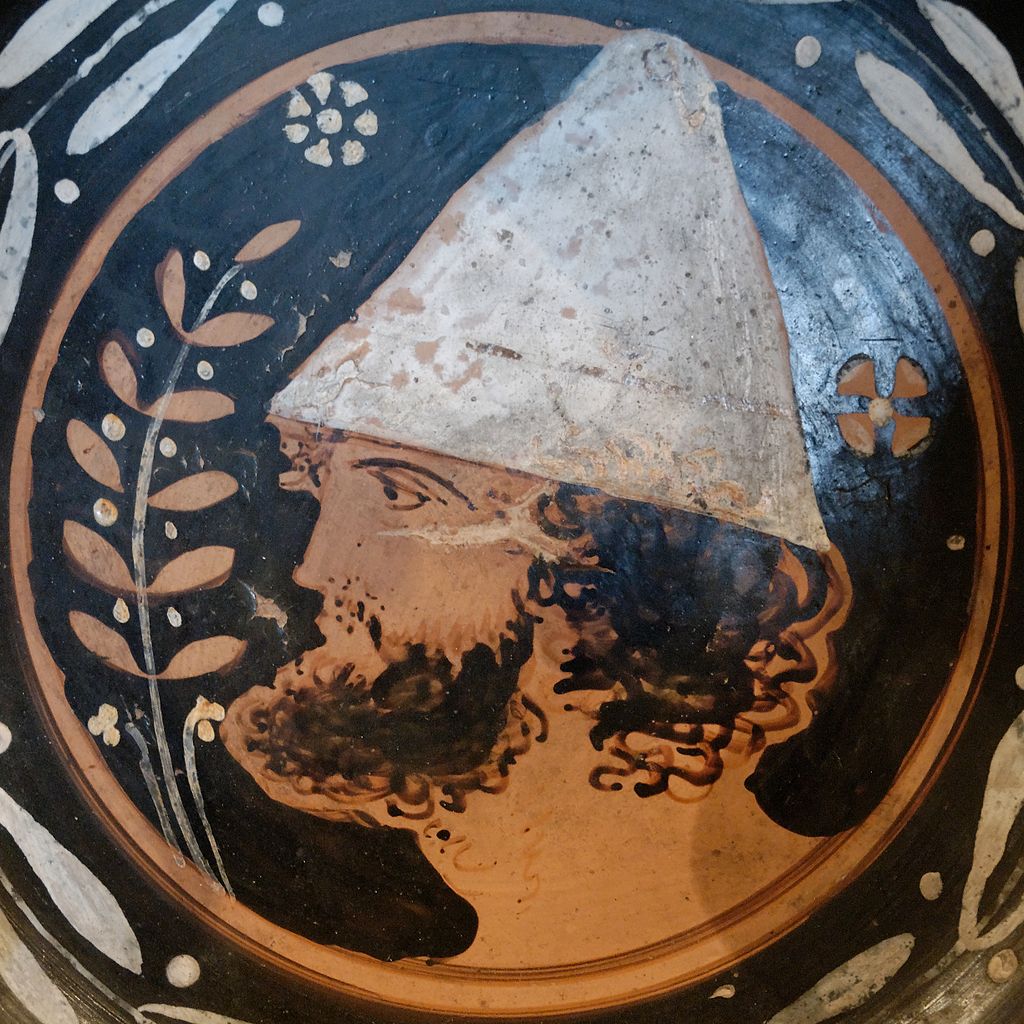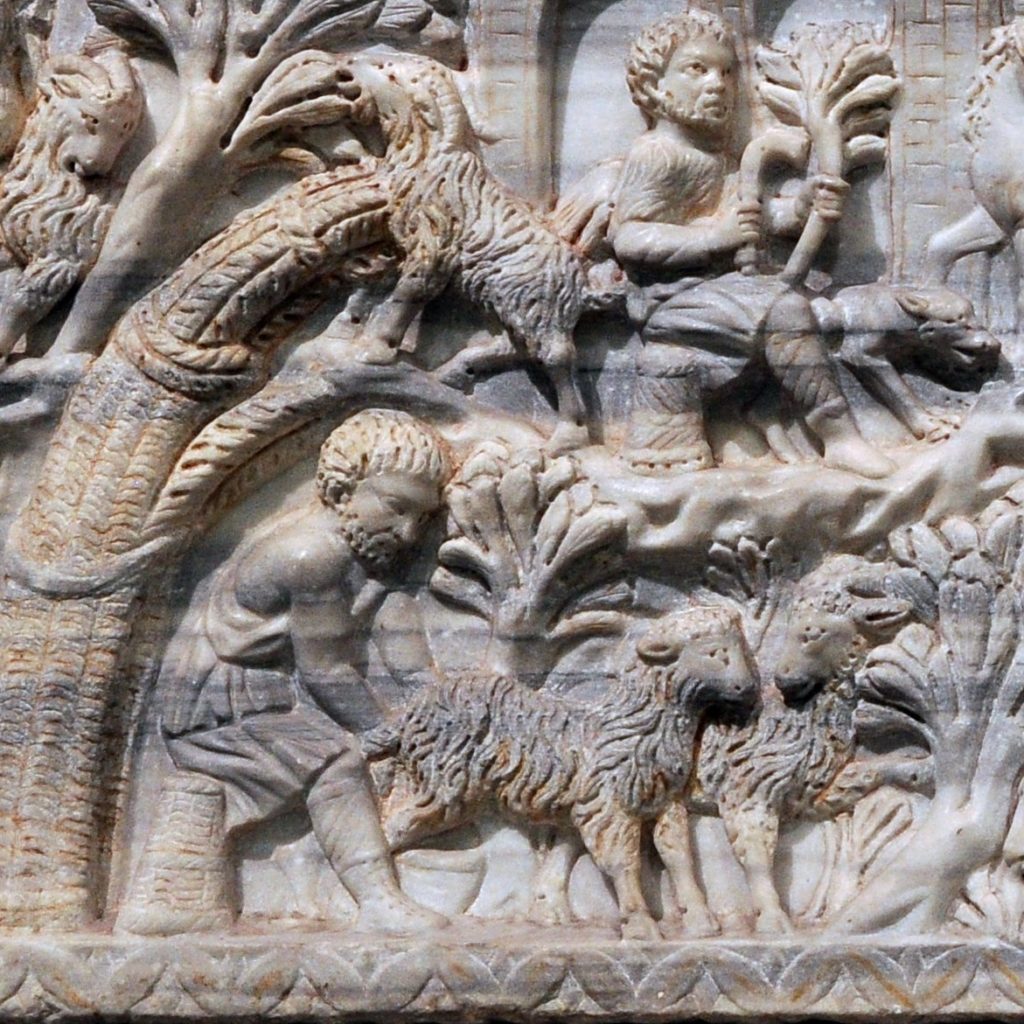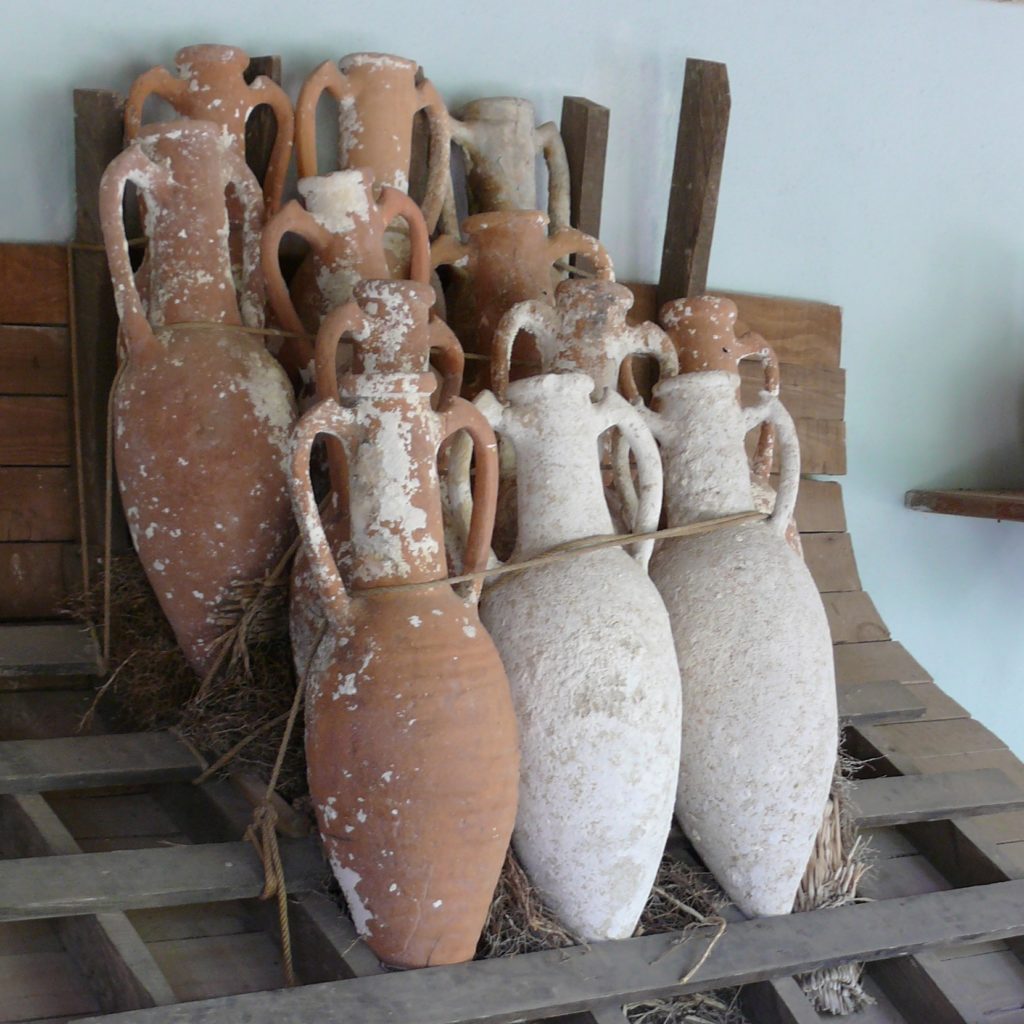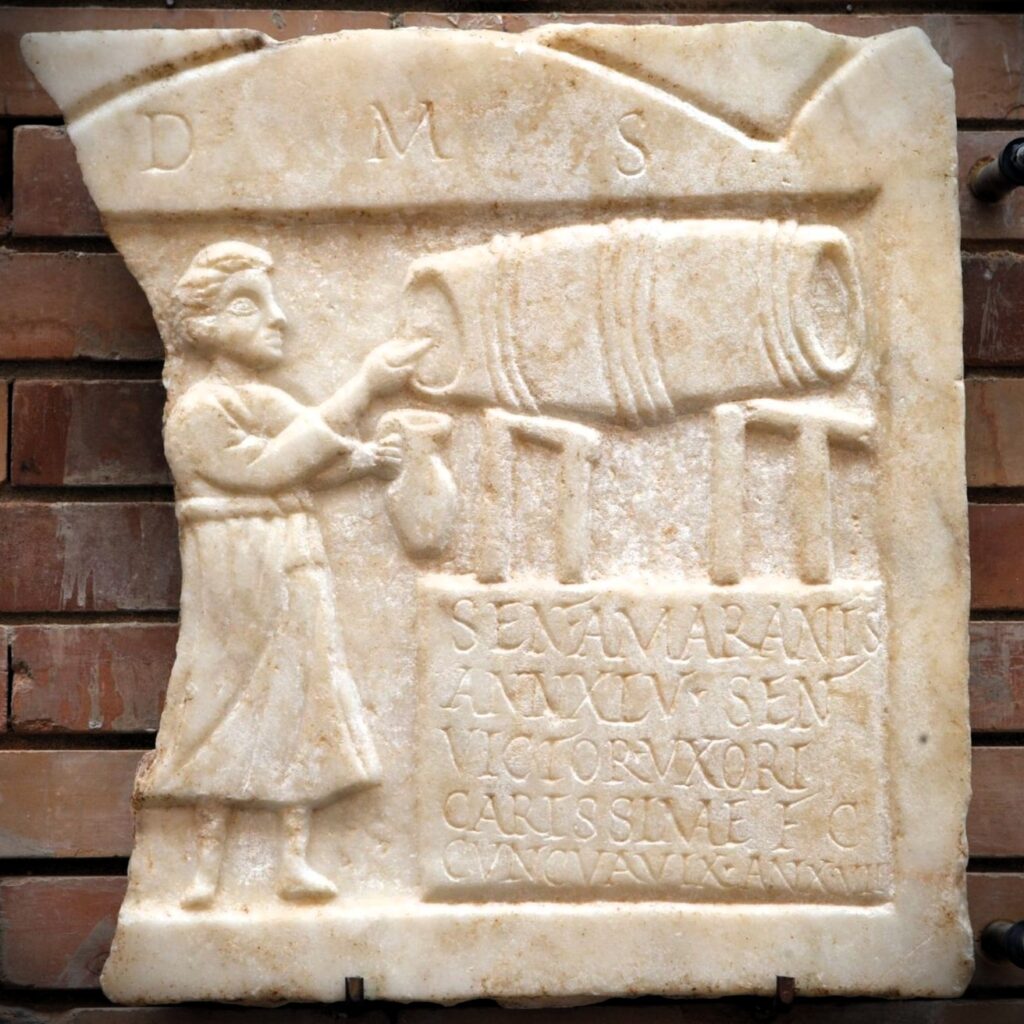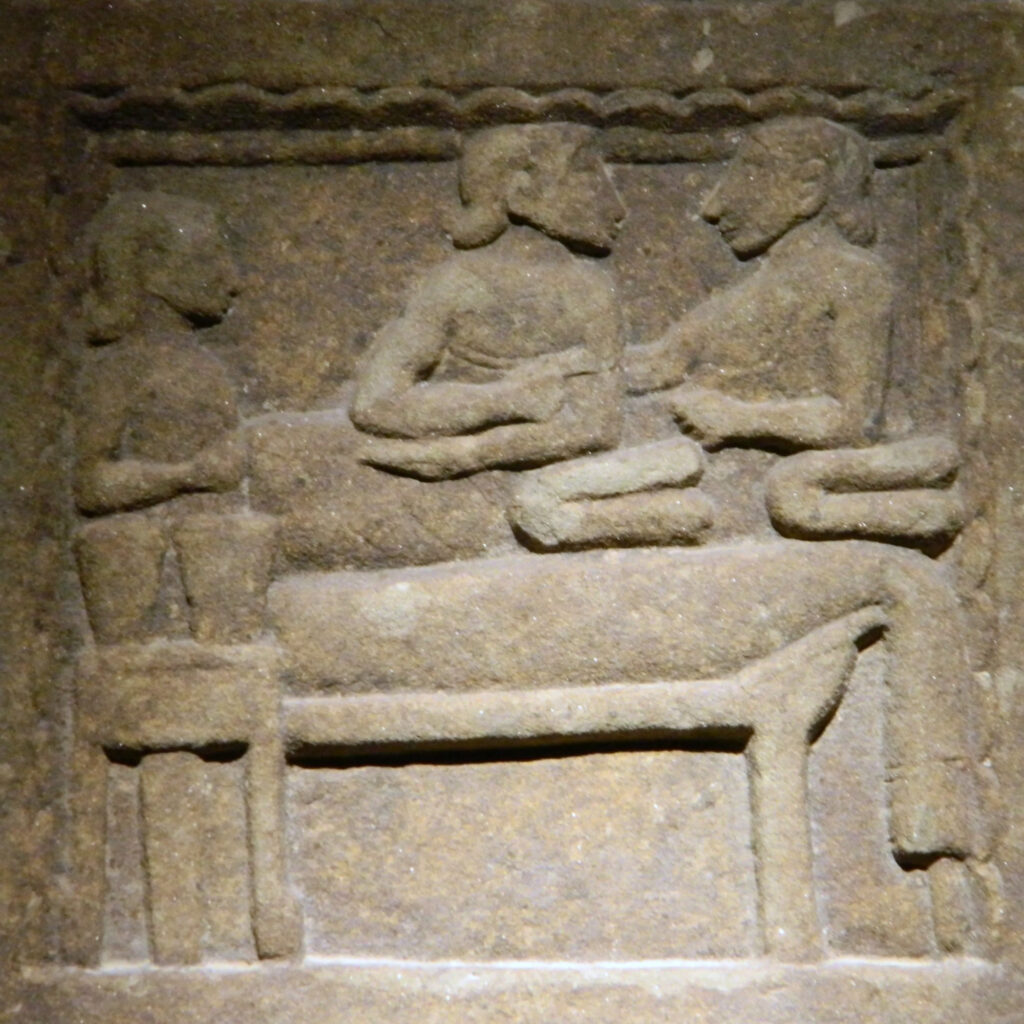Translated from french with Deepl (please notify us of errors)
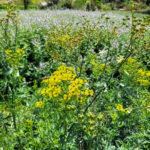
Beware if you rub yourself against it: it can cause severe skin burns. The rue we’re talking about here is a plant with an ambivalent reputation, but one that was nevertheless much appreciated by the ancient peoples: ruta graveolens. With its finely-cut, green leaves, sometimes with bluish highlights, and its small yellow flowers, it forms pretty shrubs that are abundant in the Mediterranean region. It emits a substance that reacts to sunlight, hence the risk mentioned above. But that’s not the only reason to be wary.
Consumed in large quantities, rue causes violent abdominal contractions. This property has sometimes been used to induce abortions, from the dawn of time right up to the dawn of the 20th century. But the violence of the procedure often led to haemorrhaging and the death of the woman. It is said that one of the daughters of the Emperor Titus (79-81), Julia Titi, died as a result of a forced ruta abortion[1]. What is certain is that Pliny the Elder, at the beginning of our era, was aware of the effects of the plant and warned his readers:
“Care must be taken that pregnant women do not consume this plant”.[2]
The plant’s danger led to its disappearance from gardens at the beginning of the 20th century, and it may even have been formally banned in certain countries at the same time as absinthe.[3]
A penetrating smell
It has to be said that, in a way, the ruta itself is a warning: its penetrating smell has earned it the French term “fétide”[4] and its taste is very bitter. So much so that it inspired a parable by Cicero. Referring to an unpleasant character, he wrote:
“To combat his rue (pungency) I need the pulegium (sweetness) of your words.”[5]
Pulegium is a variety of mint.
So much for the indictment. But the street also has something to defend itself.
 Firstly, its strong odour has been used since ancient times as a repellent for all sorts of pests. Palladius (5th century) recommended using ruta to protect dovecotes, “by hanging branches in many places”.[6] And some eight centuries earlier, Aristotle reported that a weasel, before attacking a snake, first eats rue, the smell of which is detested by reptiles.[7]
Firstly, its strong odour has been used since ancient times as a repellent for all sorts of pests. Palladius (5th century) recommended using ruta to protect dovecotes, “by hanging branches in many places”.[6] And some eight centuries earlier, Aristotle reported that a weasel, before attacking a snake, first eats rue, the smell of which is detested by reptiles.[7]
But that’s not all: the plant – taken in small quantities – also has medicinal qualities. According to Pliny, “ruta is one of the most effective medicines”.[8] This is followed by an impressive list of virtues. It is good against poisons and poisonous mushrooms (certainly by inducing vomiting), but also against the stings of scorpions, spiders and hornets, snake bites and rabid dogs. It improves eyesight and relieves headaches and coughs… The list of benefits goes on and on, and it would be tedious to reproduce it all.
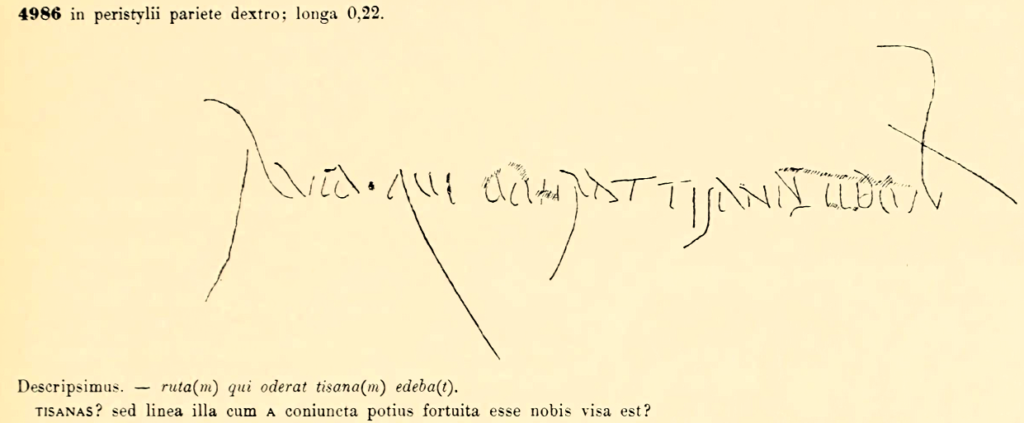
A mystery in Pompeii
So let’s move on to the last but not least quality of ruta. The plant was used extensively in Roman cuisine, in all its forms: fresh (viridis) or dried (arida), in bunches (fasciculus), its berries (bacae), its seeds (semina)… Cato testifies to its use as early as the first centuries of the Republic. He mentions ruta in a recipe for epityrum (an olive paste that is the ancestor of tapenade).[9] In the 1st century, Columella also included the plant in this recipe, as well as in that for moretum, a fresh cheese made with herbs.[10] Apicius included ruta in no fewer than a hundred recipes.
This plant also left its mark on the walls of Pompeii, in an enigmatic inscription…
“He who hated the streets ate barley porridge”.[11]
If this is a metaphor, the meaning escapes us. In the absence of anything better, here are two possible interpretations. Since rue is a highly prized ingredient in many dishes, anyone who doesn’t like it must be satisfied with the simplest of meals, barley porridge. Or, more prosaically, rue is a repellent for vermin, which hate it but devour the grain…
If you come up with a more convincing idea, don’t hesitate to let us know!
[1] But as far as we know, there are no ancient sources to corroborate this story.
[2] Pliny, Natural History, 20, 143 : praecovendum est gravidis abstineant hoc cibo.
[3] Ruta and absinthe are both back on the aromatic plant shelves of garden centres after a century of ostracism.
[4] Fetid. In reality, the smell is strong, but not unpleasant to all nostrils.
[5] Cicero, Letters to friends, 16, 23, 2 : ad cujus rutam puleio mihi tui sermonis utendum est.
[6] Palladius, I, 24, 3 : Ruta ramulos plurimis locis oportet contra animalia inimica suspendere.
[7] Aristotle, History of Animals, IX, 7: Ἡ δὲ γαλῆ ὅταν ὄφει μάχηται, προεσθίει τὸ πήγανον· πολεμία γὰρ ἡ ὀσμὴ τοῖς ὄφεσιν. Pliny takes up the story in his Natural History, 20, 132: simili modo contra serpentium ictus, utpote cum mustelae dimicaturae cum his rutam prius edendo muniant se.
[8] Pliny, Natural History, 20, 131 : In praecipuis autem medicaminibus ruta est.
[9] Cato, On Agriculture, 119, 7.3.
[10] Columella, 12, 49, 9 et 12, 59, 1.
[11] C.I.L 4986 : Ruta(m) qui oderat tisana(m) edeba(t).
June 2024, reproduction prohibited
Other articles in English from the Nunc est bibendum blog
